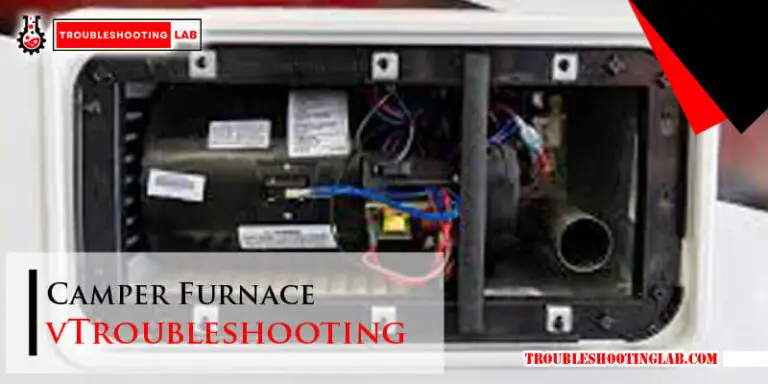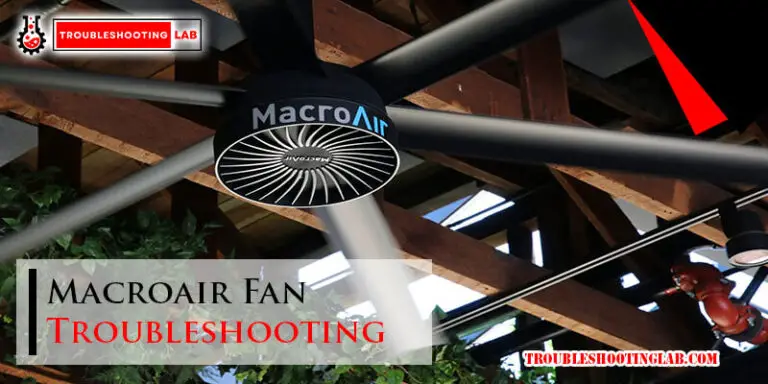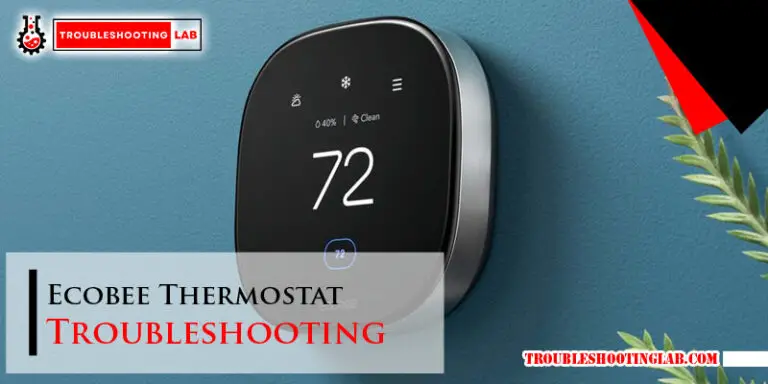Hampton Bay Ceiling Fan Troubleshooting: Quick Fixes
Troubleshoot your Hampton Bay Ceiling Fan by checking for a bad capacitor or wiring issues. If the fan spins slowly or doesn’t start, it may be the capacitor.
If it suddenly stops working, there could be a wiring problem. A common issue is a wobbly fan caused by misaligned blades or loose holders. To reset your Hampton Bay fan, turn off the power, put the hub in pairing mode, and let it discover the device.
If problems persist, seek professional help for electrical installation or replacement. Proper installation and maintenance can prevent remote control issues and ensure your fan works efficiently.

Credit: www.homedepot.com
Initial Steps For Troubleshooting
Start of HTML code
Before delving into more complex troubleshooting steps, it’s essential to start with some initial checks when dealing with Hampton Bay Ceiling Fan issues.
Safety First: Ensuring Power Is Off
- Turn off the power supply to the ceiling fan at the circuit breaker.
- Use a voltage tester to ensure there is no electricity running to the fan.
Tools And Materials You’ll Need
Having the right tools and materials on hand can make the troubleshooting process smoother.
| Tools | Materials |
|---|---|
| Screwdriver set | Replacement capacitor |
| Wire stripper | Electrical tape |
| Voltage tester | Replacement fan blades (if needed) |
Identifying Common Issues
Troubleshooting common issues with a Hampton Bay ceiling fan involves identifying problems like wobbly fan blades, electrical wiring issues, and malfunctioning capacitors. By carefully inspecting and addressing these issues, you can ensure that your ceiling fan operates smoothly and efficiently.
Identifying Common Issues
Hampton Bay ceiling fans are popular for their functionality and stylish designs. However, like any other electrical appliance, they can encounter problems that need troubleshooting. Identifying common issues is the first step in troubleshooting your ceiling fan. Here are some common problems and their solutions.
When the Fan Won’t Start
If your ceiling fan doesn’t start, it could be due to several reasons. First, check if the fan is receiving power by turning on the light switch connected to the fan. If there is no power, it could be due to a blown fuse or tripped circuit breaker. If the power supply is okay, check the fan’s wiring connections for any loose connections or breaks.
Dealing with a Slow-Spinning Fan
A ceiling fan spinning slower than usual could be due to a faulty capacitor. The capacitor is responsible for providing the initial start and maintaining the fan’s speed. If the capacitor is faulty, it could lead to slow spinning or a complete stoppage of the fan. Replace the faulty capacitor with a new one to resolve the issue.
Sudden Fan Stoppage: Causes and Solutions
If your ceiling fan suddenly stops working, it could be due to several reasons. A blown fuse or tripped circuit breaker could be the cause of the problem. If the power supply is intact, check the fan’s wiring connections for any loose or broken wires. Another possible cause of sudden stoppage is a faulty motor. In this case, you will need to replace the fan motor or purchase a new ceiling fan.
In conclusion, identifying common issues is crucial in troubleshooting your Hampton Bay ceiling fan. Always ensure that the power supply is okay before checking the wiring connections or replacing any parts. If you encounter any difficulties, seek the services of a professional electrician.
Electrical Checks
When troubleshooting issues with your Hampton Bay ceiling fan, performing electrical checks is an essential step to identify and resolve problems. This involves assessing the power supply and wiring, as well as testing the fan’s capacitor to ensure proper functioning. Let’s delve into these electrical checks to diagnose and troubleshoot your ceiling fan effectively.
Assessing Power Supply And Wiring
First, ensure the power to the fan is turned off before proceeding with any checks. Use a voltage tester to confirm that the power is indeed off to prevent any electrical accidents.
Next, carefully examine the wiring connections between the fan and the power source. Look for any loose or damaged wires that may be causing the issue. Tighten any loose connections and replace any damaged wires to ensure a secure and stable electrical connection.
Testing The Fan’s Capacitor
The capacitor is a crucial component responsible for the fan’s start-up and speed maintenance. To test the capacitor, start by turning off the power to the fan.
Once the power is off, carefully access the capacitor within the fan. Use a multimeter to test the capacitance and check for any signs of damage or malfunction. If the capacitor is found to be faulty, it may need to be replaced to restore the fan’s proper functionality.
Mechanical Adjustments
When troubleshooting your Hampton Bay ceiling fan, mechanical adjustments play a crucial role in resolving common issues. Making the necessary adjustments to your ceiling fan can help address wobbling, blade balancing, and alignment problems. In this section, we will explore how to fix a wobbly fan and effectively balance and align the fan blades.
Fixing A Wobbly Fan
If you notice that your Hampton Bay ceiling fan is wobbling, it could be a result of misaligned blades or loose blade holders. To rectify this issue, it’s essential to adjust the blades and ensure that the screws holding them are properly tightened. If the problem persists, seeking professional electrical installation and replacement services may be necessary for your living room or bedroom.
Blade Balancing And Alignment
Proper blade balancing and alignment are vital for the smooth operation of your ceiling fan. If you encounter imbalance or irregular spinning, it’s important to address the blade alignment and balance. This can be achieved by carefully adjusting the position of the blades and ensuring that they are uniformly balanced. Additionally, checking the blade alignment and making necessary adjustments can significantly enhance the performance of your Hampton Bay ceiling fan.
Remote Control Troubles
When it comes to troubleshooting your Hampton Bay ceiling fan, one of the most common areas of concern is the remote control. Issues with the remote can range from battery and signal problems to the need for a reset. Let’s delve into some troubleshooting tips to address these remote control troubles.
Battery And Signal Issues
If you find that your Hampton Bay ceiling fan remote is unresponsive, the first step is to check the batteries. Ensure that the batteries are inserted correctly and have sufficient power. Weak or incorrectly placed batteries can lead to signal transmission problems, causing the remote to malfunction. If the batteries are in good condition, consider the signal reception. Interference from other electronic devices or a distant signal can disrupt the communication between the remote and the fan, resulting in operational issues.
Resetting Your Hampton Bay Remote
If troubleshooting the battery and signal does not resolve the remote control issues, resetting the remote may be necessary. To reset the remote, start by removing the batteries and pressing all the buttons to drain any residual power. Then, reinsert the batteries and aim the remote at the fan while pressing the buttons to re-establish the connection. If the problem persists, you may need to re-pair the remote with the fan by following the manufacturer’s instructions for your specific model.
Replacement Parts
When your Hampton Bay ceiling fan encounters issues, finding the right replacement parts is crucial for restoring its functionality. From capacitors to remote controls, understanding how to source and select the right components is essential for effective troubleshooting.
Selecting The Right Capacitor
Selecting the correct capacitor for your Hampton Bay ceiling fan is vital for ensuring optimal performance. Capacitors are responsible for regulating the fan’s speed and initiating its rotation. If you notice your fan running at inconsistent speeds or struggling to start, it could be a sign of a faulty capacitor. To select the right capacitor, identify the model and specifications of your fan, and consult the official Hampton Bay website or authorized dealers for compatible replacements.
Where To Find Hampton Bay Parts
Finding genuine Hampton Bay parts is essential for maintaining the quality and performance of your ceiling fan. Authorized dealers and retailers such as Home Depot often carry a range of replacement parts for Hampton Bay fans, including capacitors, remote controls, and light kits. Additionally, the official Hampton Bay website provides a convenient platform for purchasing authentic parts, ensuring compatibility and reliability for your fan.
Disassembly And Repair
Troubleshoot your Hampton Bay ceiling fan by following disassembly and repair steps. Secure power, disassemble, diagnose, replace parts, and test for effective repair. Get your fan spinning smoothly again with these troubleshooting techniques.
Disassembly and Repair are essential steps in troubleshooting your Hampton Bay ceiling fan. If your fan is not working correctly, it is crucial to disassemble and repair any faulty components. This guide will walk you through the step-by-step process of disassembling your fan and replacing any faulty components.
Step-by-step Fan Disassembly
The first step in disassembling your Hampton Bay ceiling fan is to turn off the power supply. Once you have turned off the power, remove the fan’s housing canopy and set it aside. Next, remove the fan’s blades by unscrewing them from the motor assembly.
After removing the blades, remove the fan’s motor assembly by unscrewing it from the ceiling bracket. Once you have removed the motor assembly, you can access the fan’s internal components.
Replacing Faulty Components
Once you have disassembled your Hampton Bay ceiling fan, you can begin to diagnose and replace any faulty components. Common issues with ceiling fans include faulty capacitors, damaged wiring, and malfunctioning switches.
If you suspect that your fan’s capacitor is faulty, you can test it with a multimeter. A faulty capacitor will typically read as an open circuit. To replace the capacitor, simply remove the old capacitor and replace it with a new one.
If you suspect that your fan’s wiring is damaged, you should inspect the wiring for any signs of wear or damage. If you find damaged wiring, you will need to replace the damaged section with new wiring.
If your fan’s switch is malfunctioning, you can replace it with a new one. To replace the switch, simply remove the old switch and replace it with a new one.
In conclusion, disassembling and repairing your Hampton Bay ceiling fan is an essential step in troubleshooting any issues with your fan. By following these step-by-step instructions, you can diagnose and repair any faulty components and get your fan working correctly again.
Reassembly And Testing
When it comes to reassembly and testing your Hampton Bay ceiling fan after troubleshooting, it’s essential to follow the correct steps to ensure proper functionality.
Putting Your Fan Back Together
Begin by reassembling the fan components in the reverse order of disassembly. Tighten all screws securely to avoid any wobbling or imbalance issues.
Final Testing And Safety Checks
- Turn on the power to the fan and observe its operation for any unusual sounds or vibrations.
- Check the fan speed settings to ensure they are functioning correctly.
- Verify that the fan blades are rotating smoothly without any obstructions.
- Test the fan’s light kit, if applicable, to confirm proper illumination.
Perform a safety check by ensuring all electrical connections are secure and that there are no exposed wires. Test the fan’s remote control or wall switch to guarantee seamless operation.
Frequently Asked Questions
How Do I Know If My Ceiling Fan Capacitor Is Bad?
To determine if your ceiling fan capacitor is bad, check if the fan doesn’t start or spins slowly. These issues indicate a faulty capacitor affecting the fan’s performance and speed. Replacing the capacitor can resolve this problem.
Why Did My Ceiling Fan Suddenly Stop Working?
Ceiling fan may stop due to wiring issues. Check for faulty wiring between switch and fan.
What Is The Common Problem Of A Ceiling Fan?
Common problem of a ceiling fan is wobbling. This is often caused by misaligned or loose blades. Fix by adjusting or tightening screws. If issue persists, consider professional help for electrical installation or replacement.
How Do I Reset My Hampton Bay?
To reset your Hampton Bay, start with the power off, put the hub in pairing mode, and let it discover the device successfully. Check wire connections and ensure the hub is close to the fan. For further assistance, refer to the Hampton Bay Ceiling Fan Troubleshooting Guide.
Conclusion
Troubleshooting your Hampton Bay ceiling fan is a manageable task with the right steps. From identifying problems to replacing parts, following a systematic approach can help resolve issues efficiently. By understanding common fan problems and solutions, you can ensure your fan operates smoothly and efficiently.






Fan spins at high speed only. Help.
Hi there,
It sounds like your Hampton Bay ceiling fan is stuck on high speed and not responding to other speed settings. This issue is often caused by a faulty capacitor, a malfunctioning pull chain switch, or a problem with the remote control. Here’s how you can troubleshoot:
If none of these steps work, let me know, and I’d be happy to help further!
Best,
TroubleshootingLAB